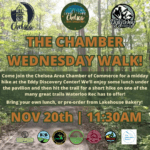Making Maple
As the saying goes, March is often “In like a lion, out like a lamb”, relating to the unpredictable and drastic shifts in temperature that occur throughout the month. This can dramatically alter recreational plans, and it also happens to have an impact on the maple sugar making season. No matter the weather, who doesn’t love warm pancakes or waffles doused with some pure maple syrup! The two go hand in hand annually at the Maple Sugar Festival at the Waterloo Recreation Area-Eddy Discovery Center. Sponsored by the Waterloo Natural History Association, this annual festival has numerous interactive options to learn the history and how present day maple sugar collections follow similar traditions to how Native Americans and early settlers collected and processed this “liquid gold”. My family attended the festival for the first time this year on one of the coldest days in March. So cold in fact, we saw the sugar water frozen as it had been pouring out of the tree. We participated in all the festival had to offer, including learning how to tap a tree, creating a maple leaf lanyard, an interactive hike, and my favorite, maple syrup taste testing thanks to local Chelsea maple syrup makers, H&H Sugarbush. One of the presenters even told a fable from the Anishinaabe that had me curious to explore more of this history. Here’s a link I found if you happen to be an inquisitive mind as well. This link is chalked full of interesting facts to explore further.

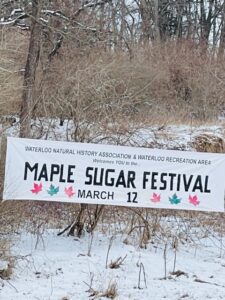

There were numerous other fun facts shared that likely will lead to a higher level of appreciation the next time you enjoy a plate of maple syrup pancakes.

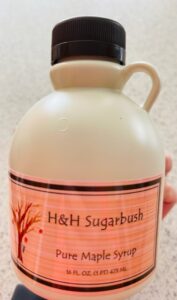


- Maple sugar season is typically 2-8 weeks, depending on the temperature that has to be just right to allow the sugar water to flow, not too hot and not too cold, just like Goldilocks.
- Different types of maple trees produce variable amounts of sugar, the Sugar Maple will produce 1 gallon of syrup for every 40 gallons of sugar water, whereas a Red Maple requires almost twice that amount.
- Maple sugar was historically the end product prior to refrigeration rather than the syrup, due to the fact that it would ferment & spoil. These were made into sugar cakes that were used for trading.
- A spile is the piece you often see in the trees that spikes the sapwood where the water flows via osmosis.
- The Sumac tree was often used before metal for the spile as the pit is very soft and able to be hollowed out.
- Since the sugar water is heavier than pure water, American Indians would often let this sit in a hollowed out log, allowed to freeze and then the top layer of pure water was chipped off. This decreased the time to boil the excess water.
- The thickness of the tree dictates how many spiles you can place. Ideally placing one in each cardinal direction maximizes the flow as the sun shifts throughout the day and warms up different sides of the tree.
- Spiles cannot be placed in old holes from years past as the tree more or less scars over in those areas.
- While the tools of maple sugar harvesting may have changed, the process of actually extracting the sugar is the same.
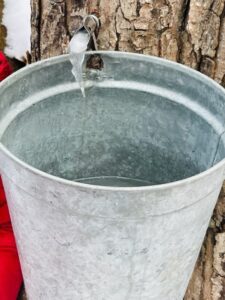

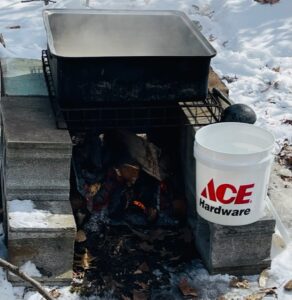
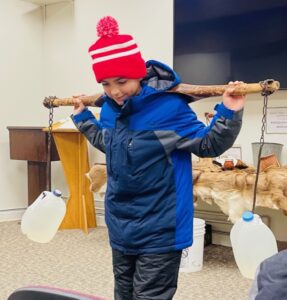
The Eddy Discovery Center offers year long programming to help engage with nature. The surrounding Waterloo Recreation area is the largest Michigan State park in the lower peninsula, right in our backyard! There are a multitude of hiking trails to explore that are also eligible for Chelsea’s Trail Challenge. It’s a win-win. Unlike harvesting maple syrup, there’s no such thing as bad weather when it comes to hiking, only bad preparation. Mark your calendars for next year’s Maple Sugar Festival!
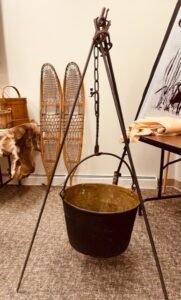

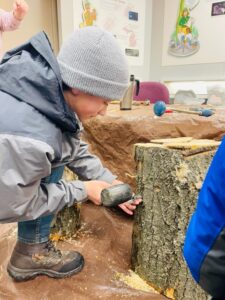
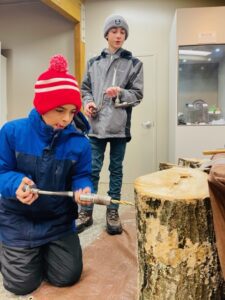
Thank you, Chelsea Area Friends for Recreation, for this blog.










